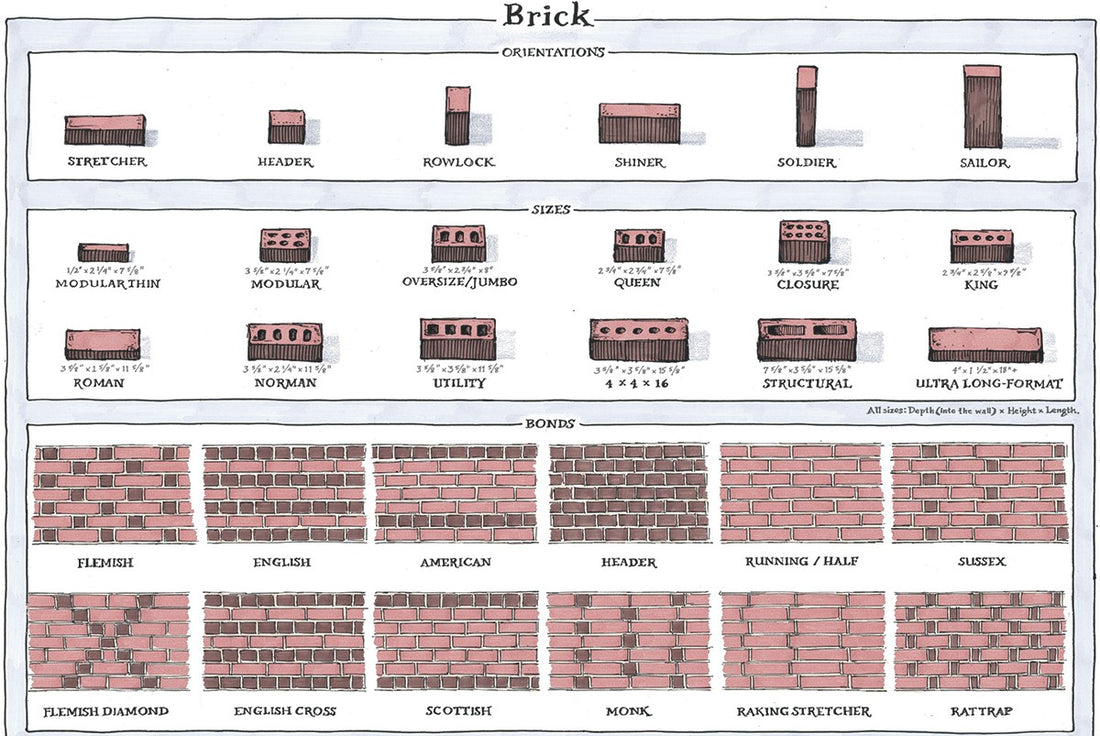What are the different brick sizes and dimensions?
Bricks are a versatile and durable building material that has been used for centuries. They come in a wide variety of sizes and dimensions, each with its own unique characteristics and applications. Understanding the different brick sizes is essential for builders, architects, and homeowners alike, as it can impact the overall design, construction time, and cost of a project.
Standard Brick Sizes and Dimensions
There are several standard brick sizes that are commonly used in the United States. These include:
- Modular Brick: 2 1/4 inches high x 3 5/8 inches wide x 8 inches long. This is the most common brick size in the US and is often used in residential and commercial construction.
- Norman Brick: 2 1/4 inches high x 3 5/8 inches wide x 12 inches long. This brick is longer than a modular brick and is often used for decorative purposes or in projects where a more rustic look is desired.
- Roman Brick: 1 5/8 inches high x 3 5/8 inches wide x 12 inches long. This brick is even longer than a Norman brick and has a unique, elongated shape that adds character to buildings.
- King Size Brick: 2 1/4 inches high x 3 5/8 inches wide x 16 inches long. This is the largest standard brick size and is used for projects where a large, bold aesthetic is desired.
Other Brick Sizes
In addition to the standard brick sizes, there are also many other types of bricks available, including:
- Thin Brick: These bricks are typically 1/2 inch thick and are often used for cladding or veneer applications. Thin bricks are lighter than standard bricks and are easier to install, making them a popular choice for renovation projects.
- Paver Brick: Paver bricks are thicker than standard bricks and are designed to be used for walkways, patios, and driveways. They are often made from concrete or clay and come in a variety of colors and textures.
- Fire Brick: Fire bricks are made from a special type of clay that can withstand high temperatures. They are often used in fireplaces, ovens, and other applications where heat resistance is critical.
- Custom Bricks: Some manufacturers offer custom brick sizes and dimensions to meet specific project requirements. This can include bricks with unusual shapes, sizes, and colors.
Factors to Consider When Choosing Brick Size
When choosing a brick size for your project, there are several factors to consider, including:
- Aesthetics: The size and shape of the brick can significantly impact the overall look and feel of a building. Consider the style of your home or building and choose bricks that complement the design.
- Structural Integrity: The size and type of brick used can affect the structural integrity of a building. Make sure to choose bricks that are strong enough to support the weight of the structure.
- Cost: Brick prices can vary depending on the size, type, and manufacturer. Consider your budget when choosing bricks for your project.
- Availability: Some brick sizes and types may be more readily available than others. Check with local brick suppliers to see what options are available in your area.
Conclusion
Understanding the different brick sizes and dimensions is essential for anyone involved in construction or renovation projects. By carefully considering the factors discussed above, you can choose the right brick size to create a beautiful, durable, and cost-effective structure. Remember to consult with a qualified builder or architect to ensure that your brick selection meets all building codes and safety regulations.

